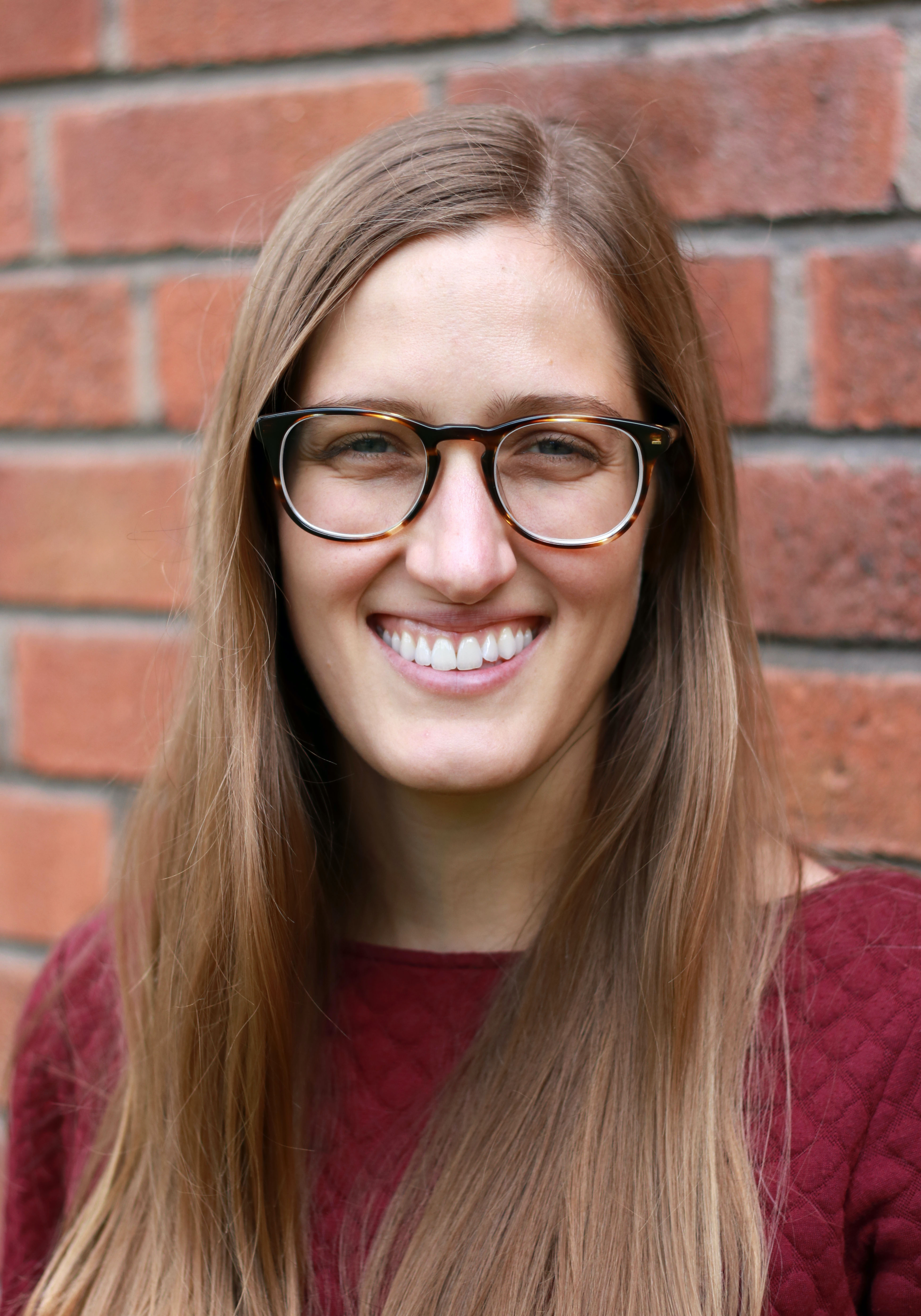A Spectrum of Possibilities
Caitlin Clements, a doctoral candidate in psychology, puts autism-related lore to the test.
“Is this my fault?”
It’s the question Caitlin Clements has heard more than any other since she began studying autism a decade ago. Currently completing a year-long clinical internship at SUNY Upstate Medical University, the Ph.D. candidate in psychology counsels families with children who have developmental or psychological disorders.
“When I see parents going through the early diagnostic process for autism, so often, they ask me why this happened and what they did wrong,” Clements says. “While we know they are not to blame, there is so much we don’t know. I wish I could give them more concrete answers—that’s what motivates me to keep working.”
Before beginning her undergraduate degree at Yale, Clements had only known one person with autism: a family friend’s son. The child’s behavior had seemed different for years, and she jumped at the opportunity to learn more about it by working in an autism-focused lab. Her commitment to exploring the condition hasn’t wavered since.
Supervised by faculty advisor Robert Schultz—scientific director of the Center for Autism Research, a collaboration between Penn and Children’s Hospital of Philadelphia—Clements has studied the relationship between IQ and autism across patients of varying ages and abilities. Recently, she has examined whether common cognitive tests like the Differential Ability Scales-II (DAS-II) test, which were developed based on neurotypical children, accurately assess the intellectual capacities of autistic children.
“When using the DAS-II with autistic kids, clinicians sometimes place a greater emphasis on nonverbal scores, thinking that maybe their verbal scores are not as meaningful because they often have lower language levels than expected for their age,” Clements says. “This seems like good intuition, but as clinicians, we have made these judgments without having real data to support them.”
Clements accessed data from the 2,000 neurotypical children used in the development of the DAS-II as well as from a study applying the test to 1,200 children with autism. In comparing their verbal and nonverbal subtest scores, she discovered that the “rule of thumb” that a child with autism has stronger nonverbal than verbal skills is, in fact, a bit of medical lore.
“It turns out that both verbal and nonverbal subtests work really well in autistic populations and capture the same things as in the normative sample. A higher nonverbal than verbal score barely predicts autism better than chance,” she says.
The study revealed another unexpected finding: Performance patterns on the test’s spatial components differed significantly between children with and without autism. Those with the condition excelled at pattern construction—an exercise in which they copied a pattern using colored blocks—but struggled with recall of design, an exercise that involved remembering and reproducing abstract designs.
“We are in the process of analyzing what these results mean and looking at whether there is a bias, and if that bias is an overprediction or underprediction of these kids’ abilities,” she explains.
Although autism is her primary focus, Clements also maintains an interest in depression—a condition she studied in 2018 as a Fulbright Scholar at the Karolinska Institutet in Sweden. Working under psychiatrist Mikael Landén, she aimed to identify genetic causes for severe depression.
“Like with autism, there are a lot of individual differences in clinical presentation among people with depression. A general label of ‘depression’ doesn’t capture these important differences, just like a general label of ‘autism’ doesn’t, either,” she says. “People with severe symptoms could have very different underlying biology than those with milder symptoms.”
To ensure a sample of individuals with truly severe depression, Clements, Landén, and their team selected those who had received electroconvulsive therapy (ECT), a “last-ditch” treatment used only with patients who had not responded to any other therapies. They then performed a genome-wide association, an approach that involves scanning markers across many complete sets of DNA to pinpoint genetic variations associated with a particular disease—and detected a potential culprit on a region of one particular chromosome.
“The landscape for the genetics of depression is no longer as bleak as it once was,” she notes. “What’s exciting about this paper’s approach is that a giant international consortium is now trying to do what we’ve done in Sweden all over the world, building up much larger samples of individuals who have received ECT to gain more traction in analyzing a more homogeneous subset. Identifying more severely affected subsets is a good direction for researchers studying autism to go, as well.”
Clements defended her dissertation, “Phenotypic and genotypic heterogeneity of autism spectrum disorders,” last spring and will graduate when she finishes her internship in August. She is applying for postdoc positions in which she can continue to study the biological basis of autism and plans to pursue a career in academic research.
“I like to see patients because it keeps me in touch with clinical issues,” she says, “but gaining knowledge about why a child has autism is cathartic for families, and my priority is to do research that helps answer these questions.”



